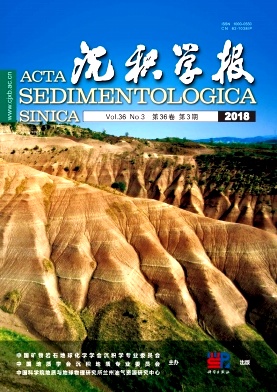A 3500 Year Environmental Changes Recorded by Sediment of Tian'E Lake, Central Part of the Qilian Mountains, China
doi: 10.14027/j.issn.1000-0550.2018.041
- Received Date: 2017-02-13
- Rev Recd Date: 2017-07-28
- Publish Date: 2018-06-10
-
Key words:
- Qilian Mountain /
- Tian'E Lake /
- late Holocene /
- environmental changes /
- Medieval Warm Period /
- Little Ice Age
Abstract: Lake sediments, especially the inland-mountain closed lake sediments may record changes of continuous paleoclimate, which is one of the important archives for paleoclimate reconstruction. Sediment core retrieved from the Tian'E Lake (TE Lake) in the central part of the Qilian Mountains was used to reconstruct climatic changes during the past 3 500 year based on the analysis of total organic carbon (TOC), elemental and mineral compositions. The chronology of TEB core was established using AMS 14C dates of ten terrestrial plant residues. The results showed that carbonate content was controlled by the supplementary of groundwater, further indicating the precipitation around the catchment. Accordingly, the precipitation of TE Lake had a decreasing tendency between 1 534 BC-1 300 AD based on carbonate content. Especially during the Medieval Warm Period (MWP) (720-1 300 AD), the precipitation reached the lowest values in the last 3 500 years. There were three-times of humid conditions during the Little Ice Age(LIA) which began at 1 300 AD and reached the most humid condition during the period of 1 600-1 730 AD. TE Lake was characterized by assembly of warm-dry and cold-wet climate transitions in the region resulted from the influence of Westerlies. Moreover, variations of local climate during LIA recorded by TE Lake sediments were more unstable than that during the MWP.
| Citation: | YAN TianLong, WANG ZhenTing, HE JianQiao, HUANG XiaoZhong, XIA DunSheng, WANG ZongLi. A 3500 Year Environmental Changes Recorded by Sediment of Tian'E Lake, Central Part of the Qilian Mountains, China[J]. Acta Sedimentologica Sinica, 2018, 36(3): 521-530. doi: 10.14027/j.issn.1000-0550.2018.041 |






 DownLoad:
DownLoad: